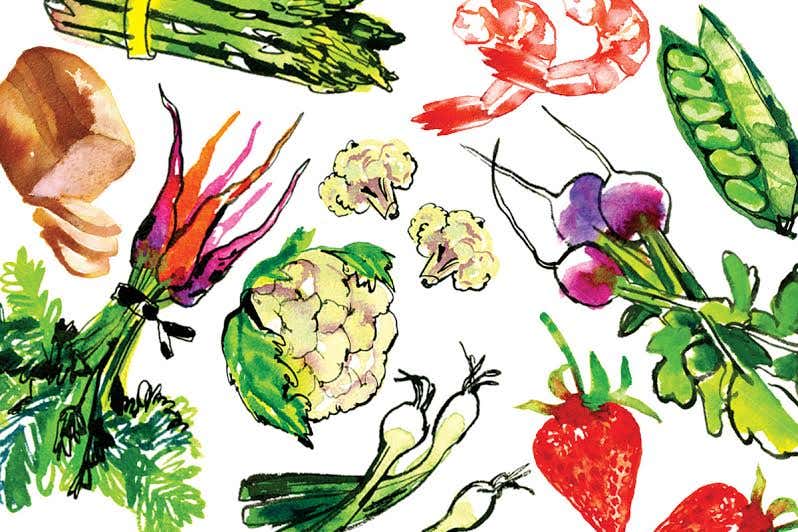
When I was a kid, my father made frequent trips to Japan, where he was born, to visit his parents, and when he came back he never failed to bring me and my siblings gifts: good-luck charms from Buddhist temples; rice-paper balloons that inflated and collapsed with a crackly sigh; and, my favorite, boxes of the traditional Japanese sweets known as wagashi. Inside each box, we'd find an eye-popping array of shapes, colors, and textures—chewy rice cakes, candies shaped like leaves or flowers, blocks of red bean jelly, and on and on.
Wagashi, in their various incarnations, have been made in Japan for more than a thousand years. They were originally simple fruit and nut confections, but by the 16th century their making had evolved into a mature art, their shapes and ornamentation evoking the forms of nature, and they had become an important component of formal tea ceremonies. Wagashi have traditionally been made from ingredients central to Japanese cuisine, such as red adzuki beans, which are pressed into an, a sweet paste; glutinous rice, which is used for making a springy cake called mochi; and seaweed, which is boiled to make an agar gelatin known as kanten. Eventually, as Japan came into contact with other cultures, foreign ingredients were embraced; for instance, kasutera, a European-style cake made with eggs, became popular in the 17th century, after Portuguese traders began visiting Japan.
Dad still showers his kids with wagashi, but now he buys them closer to home: at the New York City outlet of Minamoto Kitchoan, a Japanese confectioner founded in 1947. Minamoto Kitchoan's treats are made in Okayama, a prefecture known for the cultivation of fruit, and seasonal fresh fruits are the star ingredients in a number of its finest wagashi, such as sakuranbo, a springtime treat consisting of a single cherry suspended in kanten.
My favorite wagashi is the adorable, hamburger-like tsuya: a generous dollop of red bean paste between two mini wheat pancakes. It's the perfect companion to my breakfast coffee. Luckily, I never have to worry about running out of them, because every time I'm down to my last one, my father comes around with a fresh box. Minamoto Kitchoan's wagashi are available by the piece or in sets; to order, visit www.kitchoan.com or call 201/313-9355.
Keep Reading
Continue to Next Story










